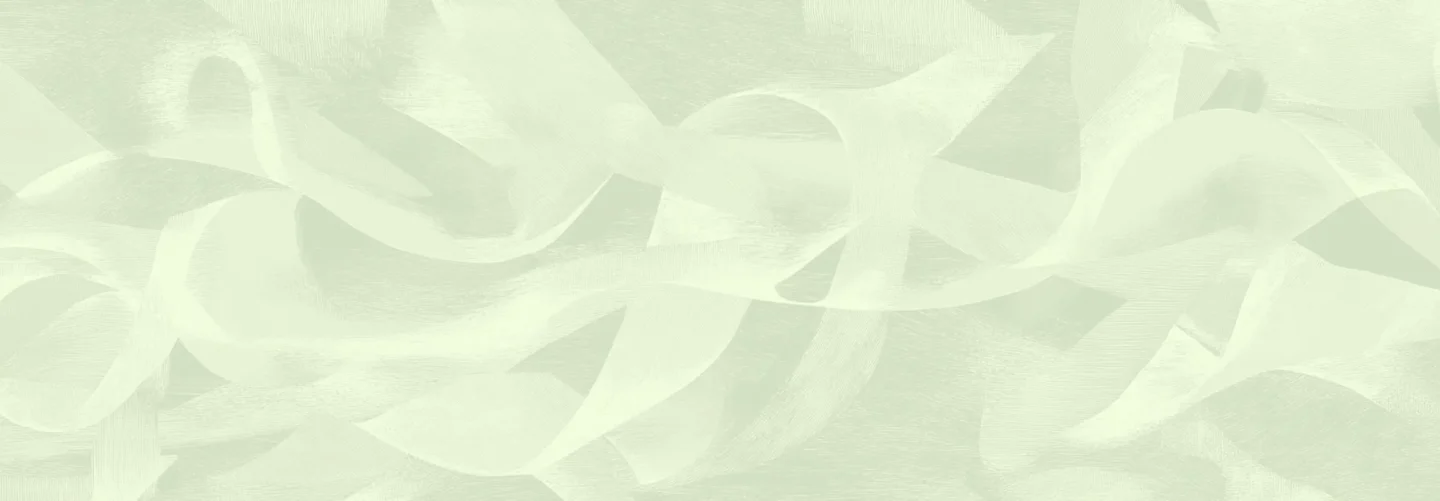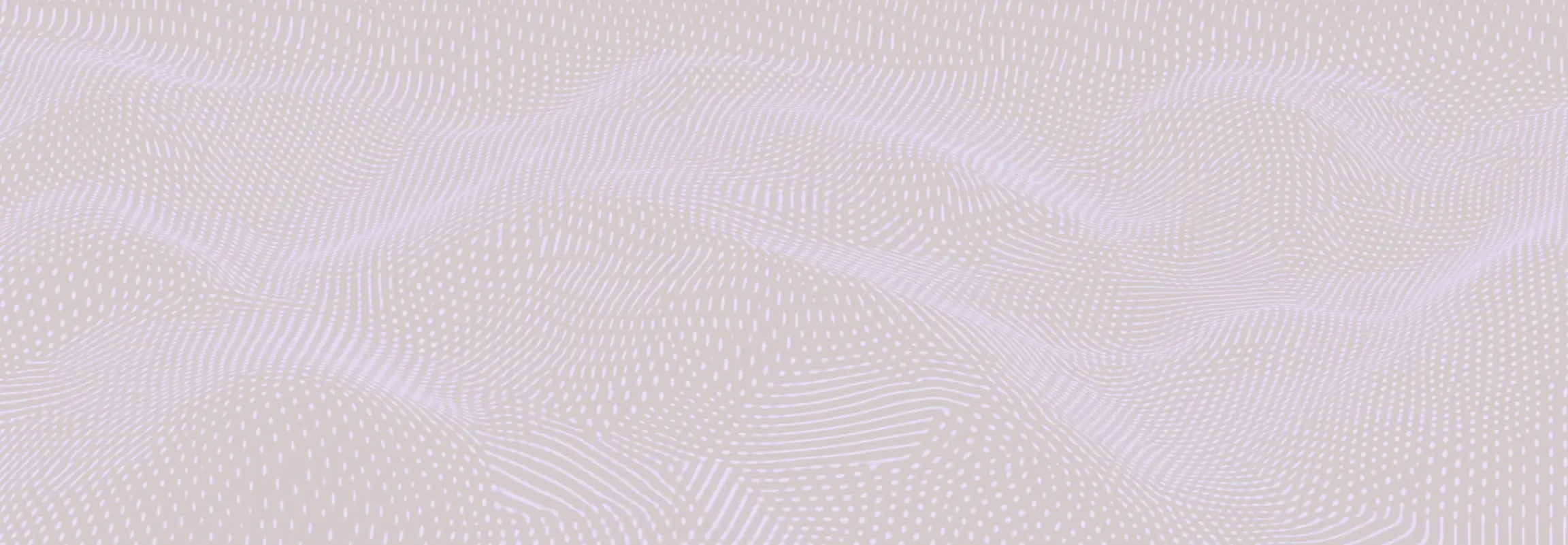PART I: Summary
Understanding Psychedelics and Consciousness
psychedelics.com
Psychedelics and Consciousness: A Journey Through Science
📖 What’s This Paper About?
This paper describes a groundbreaking ketamine-assisted psychedelic psychotherapy approach developed by Russian researchers. The study demonstrates ketamine’s effectiveness in treating alcoholism by inducing powerful altered states of consciousness that help patients confront their addiction through symbolic experiences, resulting in significant improvements in remission rates compared to traditional treatments (69.8% vs 24% after one year).
Why This Matters
Addiction can be viewed as a pathological desire to alter one’s state of consciousness. This research suggests psychedelic therapy offers a promising alternative to conventional addiction treatments by addressing the underlying spiritual and psychological dimensions of substance dependence, creating transformative experiences that fundamentally change how patients view themselves and their relationship with alcohol.
Keep Up with Uncensored Psychedelic Trends
Join our newsletter at Psychedelics Uncensored.
We respect and protect your privacy. By subscribing your info will be subject to our privacy policy . Unsubscribe easily at any time
- The method combines pharmacological intervention with psychotherapy to address both conscious and unconscious aspects of addiction
- Patients experience profound transpersonal insights that help overcome alcohol anozognosia (denial of illness)
- The approach shows promise for treating other conditions including drug addiction and neurotic disorders
Top 5 Takeaways
1. Three-stage therapeutic process
The ketamine psychedelic therapy involves a preparatory stage with individual psychotherapy sessions, the ketamine session itself where patients experience profound symbolic hallucinations, and a final group therapy session where patients integrate their experiences through discussion and interpretation.
2. Dramatic clinical efficacy
The treatment demonstrated remarkable effectiveness with 69.8% of patients maintaining sobriety for over one year, compared to only 24% in the control group receiving traditional treatments. This nearly threefold improvement suggests psychedelic therapy addresses aspects of addiction that conventional approaches miss.
3. Psychological transformation
Patients experienced significant improvements in psychological well-being after treatment, including reduced depression, anxiety, and neurotic symptoms. Their relationship to themselves, their ideal self-image, and their sober identity became more positive, while their attitude toward alcohol became strongly negative.
4. Enhanced spiritual development
The ketamine sessions frequently produced profound mystical and transpersonal experiences that led to measurable increases in patients’ spiritual development, supporting the hypothesis that addiction may represent a distorted quest for transcendence that can be addressed through guided psychedelic experiences.
5. Multiple therapeutic mechanisms
The researchers identified several complementary mechanisms that contribute to the treatment’s effectiveness: associative connections between alcohol and negative experiences, increased suggestibility during altered states, bypassing psychological defenses to access unconscious material, and active patient integration of insights afterward.
The Bigger Picture
This research, conducted in the early 1990s, represents an important bridge between earlier psychedelic research of the 1950s-60s and contemporary psychedelic science. The researchers developed a viable therapeutic approach using ketamine, a legal anesthetic with psychedelic properties, at a time when most classical psychedelics were heavily restricted. Their transpersonal framework for understanding addiction as a distorted spiritual quest, combined with their rigorous clinical methodology and impressive outcomes, anticipated many aspects of the current psychedelic renaissance in psychiatry.
Keep Up with Psychedelic Trends
Get uncensored psychedelic news, events, and updates. Join Psychedelics Uncensored!
We respect and protect your privacy. By subscribing your info will be subject to our privacy policy . Unsubscribe easily at any time
Final Thought
This pioneering work demonstrates that properly administered psychedelic therapy can provide profound healing beyond symptom reduction, addressing the existential and spiritual dimensions of addiction that conventional treatments often overlook.
PART II: Complete English Translation
Full Academic Paper Translated from Russian
psychedelics.com
PSYCHEDELIC PSYCHOTHERAPY USING KETAMINE
This article describes a method of psychedelic psychotherapy developed by the authors based on the use of ketamine. Clinical and psychological studies have shown that ketamine psychedelic psychotherapy is an effective approach to treating alcoholism and can also be successfully used to treat certain drug addictions and neurotic disorders. The possible mechanisms of the therapeutic effects of ketamine psychedelic therapy are discussed from various paradigmatic foundations of psychotherapy (transpersonal, psychodynamic, behavioral paradigms).
Keywords: ketamine, psychedelic therapy, alcoholism, addiction treatment, transpersonal psychology, altered states of consciousness, psychotherapy
Pathological craving for alcohol (as well as other types of chemical dependence) can be viewed as a pathological desire to change one’s state of consciousness using various substances. From this perspective, it seems promising to draw upon the theoretical and methodological concepts of transpersonal psychology (Grof S., 1985), which views alcohol and drug abuse as a consequence of an unrecognized, transformed into pathological forms desire for transcendence, for the “Higher Self” (Grof Ch., 1990). Based on these concepts, as well as numerous empirical data, one of the most effective approaches to treating chemical dependence may be psychedelic psychotherapy – therapy using so-called psychedelic substances that induce hallucinations and profound transpersonal experiences of a mystical, transcendent nature. The extensive and diverse literature on this topic notes that such experiences can contribute to: cathartic processes; sustainable positive psychological changes; personal growth and self-knowledge; achieving insights in understanding existential issues and the meaning of life; transformation of value orientations; changing views of one’s own “Self” and the surrounding world, life and death; increasing creative activity; expanding spiritual horizons; harmonizing human relationships with the surrounding world and other people (see Krupitsky, Grinenko, 1992). Psychotherapy within this paradigm involves preparing the patient for a psychedelic session, psychotherapeutic facilitation of its conduct, and also conducting special psychotherapy after the session to help the patient personally integrate the psychedelic experience, correlating psychedelic experiences with their life and personal issues. Thus, psychotherapy acquires a completely special quality: it is considered here not only as a process of resolving certain psychological problems of the personality but also as a special stage of spiritual transformative work.
The effectiveness of psychedelic therapy for treating alcoholism was demonstrated in the 1960s in a number of studies (see Krupitsky, Grinenko, 1992), but later work in this direction was suspended due to the introduction of strict restrictions and prohibitions on the use of most psychedelic substances, such as diethylamide lysergic acid (LSD), mescaline, psilocybin, and others. At the same time, it was known from anesthesiology practice that ketamine-containing anesthetics, approved for use as an anesthetic agent, can in some cases (with certain premedication) cause vivid hallucinations and deep psychedelic experiences. This property of ketamine was used as the basis for the method of psychedelic treatment of alcoholism that we developed, called “Affective Counter-Attribution” (AKAt) (Krupitsky, 1987; Grinenko et al., 1989b; Krupitsky et al., 1990; Krupitsky et al., 1992).
In the AKAt procedure, three main stages can be distinguished. The first is preparatory. At this stage, patients undergo 1-3 individual psychotherapy sessions, during which the patient is told, in particular, the “psychotherapeutic myth” about the mechanism of the therapeutic action of AKAt. It is explained to them that to remove pathological dependence on alcohol and form a stable attitude towards sobriety, during the psychedelic session they will be induced into a special state in which they will experience deep experiences that contribute to the awareness of the negative aspects and consequences of alcoholic illness and the positive aspects of a sober lifestyle. It is emphasized that previously unconscious, “repressed from consciousness,” but preserved in the subconscious, individually significant representations about the negative aspects and consequences of drinking will manifest in consciousness during the procedure in a special symbolic form in the form of extremely emotionally saturated visions (hallucinations). Such awareness and acute experience of the negative aspects of drinking should subsequently condition its psychological rejection and a firm attitude towards sobriety. We also try to explain to patients that during the psychedelic session, they will be able to see and feel in a figurative symbolic form the not always conscious personal roots of their alcohol problems, to understand that their immediate alcohol problem is closely interconnected with more deeply hidden personal problems and is often just a consequence of the latter. At the same time, we try to orient the patient to the fact that important personal discoveries may occur as a result of the psychedelic session. The “psychotherapeutic myth” is not presented to the patient in the form of a mentoring monologue by the psychotherapist but is dialogically discussed with them and is saturated with individual content during this discussion. Significant attention is paid to the patient’s personal motives for treatment and sobriety, the goals and meanings of their future sober life, their ideas about the causes and consequences of the disease, assumptions about what hinders liberation from alcohol dependence, and what contributes to it, etc. The individually concretized “psychotherapeutic myth” formed in this dialogue becomes the most important therapeutic factor determining the psychological content of the second stage of the AKAt procedure both in terms of the corresponding behavior of the psychotherapist and in terms of the psychedelic experiences vectorized by them.
The second stage is the AKAt procedure itself, a ketamine psychedelic session, during which the patient is administered etimizol, followed by bemegride and a ketamine-containing anesthetic in subanesthetic doses. Bemegride, being an anxiogenic, potentiates negative emotional experiences and visions, while etimizol promotes the firm imprinting of the experience in long-term memory (Smirnov, Borodkin, 1979). In addition, both of these drugs (etimizol and bemegride), being central analeptics, enhance the functional activity (tone) of the cerebral cortex, which expands the possibilities for psychotherapeutic dialogue during the ketamine psychedelic session. Further, against the background of special emotiogenic, dramatic music, psychotherapeutic actions are carried out. Although the patient at this time is in a world of hallucinatory experiences, rapport with them is maintained. These influences, based on specific data from the patient’s anamnesis and the content of conversations with them conducted in the first stage, are aimed at forming a firm attitude towards sobriety and psychological rejection of drinking, resolving certain personal problems, and a deeper acceptance and mastery of the meanings and values of a sober life. The specificity of the action of the combination of administered drugs and their dosage allows not to be limited to the suggestive monologue of the doctor but gives the opportunity to carry out a kind of personality-oriented psychotherapeutic dialogue with the patient experiencing hallucinatory psychedelic experiences. During this dialogue, we try to make more relevant and significant for the patient such life goals and meanings that would contribute to a sober lifestyle, and also emphasize the negative aspects of the development of the patient’s further life according to the scenario of an “alcoholic fate.” In addition, at certain moments of the psychedelic session, usually with a sufficiently high intensity of the patient’s hallucinatory experiences, they are given to smell and taste alcohol, not only to form a deep aversion to alcohol but also to enhance the presence and negative emotionality of alcohol-related themes in the content of the patient’s psychedelic experience itself.
The AKAt procedure is necessarily conducted by two doctors – a psychotherapist and an anesthesiologist – and only in an intensive care unit.
In the third stage, a lengthy group psychotherapy session is conducted with patients who underwent AKAt the day before (4-5 people). In the interval between the second and third stages (usually 1-3 days), patients should describe in as much detail as possible everything that happened to them during the psychedelic session, and at the same time, they should not tell anyone about it until the group session. This requirement to keep the secret of their psychedelic experiences until the final psychotherapy session, on the one hand, increases the significance of the upcoming group discussion, and on the other, additionally focuses the patient on memories of the psychedelic session. During the final psychotherapy session, patients share impressions of the experiences and hallucinations experienced during the psychedelic session. They discuss them and, with the help of a psychotherapist, interpret the personal meaning of their symbolic content. This discussion is aimed at correlating the content of psychedelic experiences with each patient’s life problems (primarily those related to alcohol abuse) and thereby at awareness and consolidation of the attitude towards a sober life. At this stage, we also try to help patients accept a new attitude towards themselves and the surrounding world, conditioned by a deep, vivid, unusual psychedelic experience, we try to help them personally integrate new, often unexpected meanings, values, and views of themselves and the world, which often arise as a result of psychedelic insights.
Treatment using the AKAt method was conducted on 86 men suffering from chronic alcoholism of the second stage (age 25-49 years, average age 33.4 ± 1.07; duration of alcohol withdrawal syndrome formation 5.6 ± 0.47 years; all patients experienced loss of control over the consumption of alcoholic beverages). The AKAt procedure was conducted at the end of a three-month course of treatment in a narcological hospital. All patients voluntarily wished to undergo this procedure and gave written consent for it. The control group consisted of 100 patients with chronic alcoholism of the second stage (average age 38.4 ± 0.81 years; duration of alcohol withdrawal syndrome formation 6.8 ± 0.54; all patients experienced loss of control over the consumption of alcoholic beverages), who underwent a three-month course of treatment in the same hospital but using only traditional methods of treatment. The attitude towards treatment and the degree of social maladaptation in both groups were characterized by large inter-individual variability, but on average, the groups did not differ significantly in these indicators. To determine the effectiveness of treatment, one year after discharge, catamnestic information was collected on all patients participating in the study.
According to catamnestic examination data of patients who underwent the AKAt procedure, remission of more than one year was observed in 60 people (69.8%). Relapse of the disease occurred in 24 people (27.9%), and 9 of these 24 soon after alcohol consumption (within 1-2 months) consulted a narcologist and after the treatment, they were again in remission for a long time. Catamnestic information about two patients (2.3%) could not be obtained. In the control group of patients (100 people), who were treated only with traditional methods, remission of more than one year was observed in only 24 people (24%). Thus, the catamnestic examination data indicate a significant increase in the effectiveness of alcoholism treatment as a result of ketamine psychedelic therapy.
Most of the patients treated using the AKAt method subsequently (a few months after discharge from the hospital) noted a very significant role of AKAt in the establishment of their remission. Quite characteristic, for example, is the feedback from patient Ch-ko 7 months after discharge: “Memories associated with the AKAt procedure (very vivid) are persistently preserved and serve as a special ‘taboo’ against alcohol consumption. In those minutes when there is a craving for alcohol, the visions ‘replay’ and remind me of the negative moments of alcohol consumption. This immediately removes the craving for alcohol and prevents a relapse.”
Psychological examination of patients before and after AKAt using MMPI demonstrated a statistically significant decrease in the profile on the main scales of hypochondria, depression, psychasthenia, and schizophrenia, as well as on the additional Taylor anxiety scale, while the evaluation on the “ego strength” scale increased. In general, such favorable psychological dynamics indicates that patients became more confident in themselves, in their abilities, in the future, less anxious and neurotic, more emotionally open.
We also investigated changes in the psychosemantic sphere caused by the ketamine psychedelic session in 32 alcoholism patients. All patients were examined before and after the psychedelic session using the Personal Differential (PD) (Bazhin, Etkind, 1983) and the Color Test of Relationships (CTR) (Etkind, 1980). The following spheres of personality relations were analyzed: attitude towards oneself, close relatives, the ideal image of “Self,” to the doctor-psychotherapist, one’s alcoholic illness, as well as to the images of “I drunk” and “I sober.” The combination of PD and CTR allowed to some extent to assess changes in the system of relations and assessments of the personality occurring after AKAt not only at the conscious but also presumably at the unconscious level of the psyche.
Analysis of CTR results revealed significant positive changes in the emotional attitude towards the psychotherapist, close relatives, the ideal image of “Self,” and also to the image of “I sober.” At the same time, the attitude towards the image of “I drunk” became significantly more negative. It should also be noted that there was a tendency to improve the emotional attitude towards oneself. According to PD data, a significant positive change as a result of AKAt occurred only in relation to oneself.
It is important to note that after AKAt, there was a significant decrease in differences between isosemantic indicators of CTR and PD, which indicated a decrease in the discrepancy between verbal and non-verbal assessments of personality relations. This decrease was mainly associated with changes in CTR indicators and was most pronounced in those spheres of relations in which, according to CTR data, significant changes occurred.
Thus, psychedelic therapy of alcoholism with the help of ketamine led to significant positive changes in the sphere of personality relations, mainly due to the transformation of non-verbalized emotional relations. The fact that as a result of treatment, there were pronounced positive changes in patients’ non-verbal assessments of attitudes towards the psychotherapist, close relatives, the ideal image of “Self,” as well as to the image of “I sober,” means that the patient began to emotionally accept these images more, and therefore, the attitudes towards sobriety associated with them. In addition, the formation of an especially pronounced positive emotional attitude towards the psychotherapist in the patient as a result of AKAt opens up great opportunities for continuing the psychotherapeutic process.
Of particular interest is the significant discrepancy between verbal and non-verbal assessments of personality relations registered before AKAt. This difference apparently reflects the presence of dissonance between conscious and unconscious assessments of personality relations. Such dissonance probably characterizes a certain duality of the patient’s positions, a discrepancy between what is declared at the verbal level and what exists at the level of immediate experience. Such discrepancy can lead to the emergence of psychological discomfort, internal tension, difficulty in communicating with others, a decrease in psychological adaptation, which ultimately contributes to the relapse of alcoholism. As a result of conducting AKAt, a significant decrease in this dissonance was observed.
It can be assumed that the decrease in the discrepancy between verbal and non-verbal assessments of personality relations, as well as the harmonization of the MMPI profile occurring as a result of AKAt, are associated with the realization in consciousness (often in a special symbolic form) and partial resolution in the process of psychedelic therapy of some important internal conflicts and personality problems, which in alcoholism patients are closely related to alcohol abuse and its consequences. This is confirmed both by the statements of patients during the psychedelic session and by the data of their self-reports about the experience, written after the session (see below).
In one of the latest studies, we were able to record that strong and deep experiences of a transpersonal, often religious-mystical nature during the ketamine psychedelic session contribute to an increase in the level of spiritual development of patients (using the words “spirituality,” “spiritual,” etc. here, we refer to the semantic content of the American term “spirituality”). To assess changes in the level of spiritual development (LSD), we used a special scale of LSD changes developed by us, based on a combination of the self-assessment scale of spirituality proposed by C. Whitfield (Whitfield, 1984) for assessing changes in the spiritual sphere in the process of therapy in the Alcoholics Anonymous society, and a questionnaire of changes in life values, developed by K. Ring (Ring, 1984) to assess changes in the system of values and meanings of life in patients who have experienced clinical death. Studies using the scale of LSD changes showed that as a result of ketamine psychedelic therapy, there was a significant increase in the LSD of alcoholism patients, which is comparable to changes in LSD occurring in healthy volunteers after a special course of meditation training, and far exceeds the extremely insignificant changes in LSD that occur in alcoholism patients after a course of autogenic training.
As is known, an increase in the level of spiritual development is an essential factor contributing to remission in alcoholism patients (Corrington, 1989). Therefore, the growth of LSD in patients as a result of AKAt can also be considered as an important aspect of the realization of the therapeutic potential of the method. The research results indicate that AKAt is something more than just a procedure for forming a deep personal attitude towards a sober life; this method causes positive changes in the system of life goals and values, in the attitude towards various aspects of life and death, in the worldview of patients.
The problem of clinical and psychological mechanisms of AKAt effectiveness appears extremely complex and multidimensional. We can conditionally distinguish several aspects of the realization of the therapeutic potential of the method.
The first aspect is the most elementary and concerns the establishment of an associative connection between the organoleptic characteristics of alcohol (smell, taste) and various negative experiences during the procedure (from suggested nauseating sensations to hallucinations accompanied by fear and horror). The establishment of such a connection is evidenced by the fact that in virtually all patients, the presentation of alcohol during the procedure causes a grimace of disgust, as well as attempts to spit out the alcohol and turn away from the cotton wool moistened with it. This associative connection is developed very quickly, which is obviously conditioned, on the one hand, by the fact that under the influence of ketamine, the patient’s suggestibility increases (Sukhorukov, 1984), on the other hand, by the influence of etimizol, which, being a “non-specific connector,” promotes the rapid formation of stable associative connections, and also stimulates the consolidation of the memory trace (Smirnov, Borodkin, 1979), and finally, on the third hand, by the fact that, as a rule, the presentation of the smell of alcohol causes very vivid and personally colored negative emotional reactions, assimilated into the general picture of psychedelic experiences during the session. Due to their special brightness, expressiveness, and inclusion in a holistic, personally significant psychedelic plot, these reactions are firmly fixed in the patient’s emotional memory.
The second aspect of the realization of the therapeutic potential of the method lies in the existence of a sufficiently pronounced suggestive component in the psychotherapeutic influences conducted during the psychedelic session. The effectiveness of suggestive influence in AKAt is obviously significantly higher than in hypnotherapy, which is associated with a number of reasons. Among them should be mentioned the increased suggestibility due to the action of ketamine and the special action of etimizol on memory, but especially – the peculiar interaction of the conducted suggestive influences with the patient’s hallucinatory experiences, which, being included in the system of psychotherapeutic influences, give these influences additional objective-figurative and vivid emotional coloring, thereby increasing both subjective significance and effectiveness.
The third aspect of the method’s action is associated with the fact that the use of subanesthetic doses of ketamine (especially in combination with analeptics) provides the possibility of two-way verbal contact with the patient. This contributes to the individualization of the conducted psychotherapeutic influences. This is also facilitated by such psychological changes conditioned by the action of ketamine as the specific openness, frankness, and significant decrease in self-control of the patient, allowing during the session to address the little-conscious representations of patients. This makes it possible to more successfully form processes of resolving intrapersonal conflicts, transforming the system of personal meanings and values in a direction conducive to sobriety, as well as processes of forming a sense of freedom and responsibility in the patient. The psychotherapeutic influences conducted during the session, addressed to different levels of the psyche, directly contribute to the formation of an attitude towards sobriety, a deep personal acceptance of the priority of the meanings and values of a sober life, not so much due to the suggestive component, but precisely thanks to personality and existentially oriented psychotherapy conducted during the psychedelic session. The possibility during AKAt to address the unconscious representations of patients allows, when conducting psychotherapeutic influences, to a certain extent bypass the mechanisms of psychological defense and consciousness control, which, of course, can significantly increase the effectiveness of psychotherapeutic influences, but at the same time requires special caution.
The fourth aspect of the therapeutic action of AKAt, in contrast to the first three, is associated with the active and responsible inclusion of the patient themselves in the psychotherapeutic process. This active inclusion concerns mainly the first (programming) and especially the final stages of the method. Thus, one of the tasks realized at the final group session is at least a partial overcoming of the infantile components of the pronounced transference that usually occurs in patients as a result of the psychedelic session. During it and upon completion, the psychotherapist often seems to the patient to be a “powerful, all-knowing, kind wizard,” in whom lies their main hope and support. In the process of group discussion, the figure of the psychotherapist gradually recedes into the background, his image and the attitude towards him become more realistic. At the same time, the members of the group themselves become significantly more important.
The main psychological content of the initial and final stages of AKAt, which assumes an active, independent, and responsible position of the patient, consists in the formation and implementation of a certain attitude towards reflection, comprehension, and, most importantly, assimilation, integration of experiences during the psychedelic session itself. In accordance with this attitude, the experiences and visions are a concentrated and holistic symbolic embodiment of some deep personality problems, which are largely related to the patient’s alcoholic fate, their illness, and its various consequences (mainly negative). To clarify, we present examples of patients describing and interpreting their experiences during group discussion.
Patient P.Kh.: “I found myself inside a gigantic funnel, the bell of which went up to a terrible height, and there, at the top, was blackness. A red capsule rushed spirally upward along the surface of this funnel. Moreover, I was in this capsule or even I was this capsule, rushing closer and closer to the blackness. But at the same time, I saw myself from the side, that is, I was as if split. Suddenly I found myself at the top of the bell. What I saw made me freeze with horror. Before me gaped a terrible, dark, cold abyss, I found myself as if in open space, infinite, which cannot be comprehended by reason. I felt with every cell the horror of this abyss. One more turn – and I will fall into this darkness and will endlessly fall, fall… Even after the procedure, when I remembered this, I felt uneasy… But there was no next turn. Everything mixed, swirled, and in this whirlwind, I began to be carried somewhere up. I felt that I was rushing at high speed in a glass tunnel, and through the glass, someone’s face is vaguely outlined, and they ask me if I will drink, and I answer that no, I will not. I understand that the terrible gaping abyss, where I will be completely alone – this is what threatens me if drinking is not ended.”
Often negative experiences and visions during AKAt were directly related to alcohol:
“Lost myself. Confusion from the loss of self, of one’s body. Then death. Death – a calm flight downward through dense clouds of grayish-white color. And suddenly again birth. By some command, I see a series of terrible pictures on a red background. They move horizontally frame by frame, independently of each other. Depicted on them are sad scenes of ‘drunken life’. Dirt, broken bottles, corpses, terrible faces, drunken grimaces. It is absolutely clear to me that this is my future, of such as me (if I don’t stop drinking). It’s scary to see and a desire to quickly tell everyone what awaits us. Fast movement on an undefined transport in the form of a train. And here is the disgusting smell of alcohol, then an oath about prohibition on use.
Dissatisfaction with the oath because everything needs to be done differently. People must know and hear my oath.” (patient V.Z.).
Presenting patients with a cotton wool soaked in alcohol during the procedure almost always caused them pronounced negative experiences and an acute sense of disgust:
“Everything around began to spin, a state of weightlessness and cold appeared. The doctor’s voice sounded: ‘You are scared because of vodka, it has led you to the edge of the abyss’. And the disgusting smell of vodka appeared, which accompanied me during the entire procedure” (patient G.G.).
“I felt the smell of vodka. Here the feeling of disgust was so strong that it is impossible to describe” (patient A.K.).
“When I was given a cotton wool with alcohol… fear for myself, for the future, for children, a feeling of insanity or death from vodka” (patient D.F.).
Often the patients’ hallucinatory experiences concerned loved ones.
“Then they asked me: ‘Your daughter’s name is Inna? Do you love her?’ And so several times. Then I started flying with my daughter among white-green cliffs, around us were some creatures, scary, of a vague form. Again they began to give me vodka in the nose and mouth. My body fell apart, and part flew away with my daughter and the creatures. So I lost my daughter and found myself among blood, began to choke on it and spit blood. Again I heard a voice that all this is because of vodka, I myself allowed this to happen. I did not see my daughter again, I lost her” (patient S.L.).
“I saw parents, wife, children. They didn’t come to me but walked past, paying no attention to me” (patient S.Ya.).
Often the image of the psychotherapist was woven into the fabric of psychedelic experiences, helping to achieve something desired, to get out of a nightmare, etc.
“I understand that the doctor is helping me to get out of the streams… Again thoughts about the family. Confidence that I will break through to my family if I stop drinking” (patient A.K.).
Because of this, patients attached great importance to specific contact with the psychotherapist during the procedure:
“I remember the beginning of the conversation with the doctor when he asked not to lose contact with him. I have a feeling that contact was not lost throughout the procedure and was positive and beneficial” (patient V.G.).
As many patients noted, the words spoken by the psychotherapist during AKAt sounded somehow special, were very weighty and significant. Some words sounded different than usual, causing a pronounced emotional reaction.
“Especially somehow the word ‘vodka’ hit on the head, or more precisely, the two letters ‘dk’. The combination is very uncomfortable ‘dk’, and it especially, almost physically hit the consciousness” (patient V.K.).
It is characteristic that in the hallucinatory experiences of some patients, the psychotherapist seemed to help them transition from terrible pictures to brighter, calmer ones.
“…they gave me alcohol to smell, which caused me disgust. I remember that I shouted: ‘I don’t want to’, ‘I won’t drink’. Then I seemed to start dissolving in time and space, only the brain remained, which moved at a frantic pace in narrow labyrinths. Bright flashes of light, constant dead ends, wherever you turn. There appeared a desire, a huge desire to break out of this space. Then, as if darkening, stopping, a flash – and a door opens to a new world. At the door stands the doctor and someone else” (patient S.L.).
It should be noted that the patients’ experiences during AKAt were not always only negative. Sometimes they also had a positive emotional coloring and, at the same time, as a rule, were associated with a sober life.
“A rapid flight somewhere down. And immediately movement on an undefined type of transport into a new, pink world. Calm movement, warm tones of colors, bright yellow, pink. Feelings are pleasant, interest, curiosity. Rather, this is that non-alcoholic world where everything is very good, where there is a place only for smiles, calm movements, joy of life” (patient V.Z.).
By presenting alcohol and verbal influences, it was usually possible to transform such positive emotional experiences into negative ones.
Patients with higher intelligence and sensitivity, as a rule, noted bright, figurative, and diverse in content, more personally colored experiences, which made a very strong impression on them. Here are corresponding examples.
Patient P.F.: “Throughout the body, music begins to play synchronously with the included tape recorder, irresistibly pulling somewhere, you resist this with all your might, but you cannot hold on. It feels like in the subway, the train goes into the tunnel and you fly after it into this black abyss and cannot hold on. Music thunders in your ears, to which your entire body is subordinated, it seems to pulsate in unison with it, and you are flying somewhere in pitch darkness and at the same time you hear the doctor’s voice, who tells you about aversion to alcohol, about a sober life, etc. Then the light flashes, and you, without stopping the movement, feel yourself as a ball rolling among other balls along a corridor made of the same balls. Endless dead ends, turns, ups and downs, transformations from a ball into a cube with smoothed edges, with changes in both the illumination and the color of the corridor along which you roll. Then everything suddenly crumbles in a wave, and you rush as a wave of water along the corridor. Then everything hits something, the splash flies up to the sky, and you turn into a point of bright white color, flying in space. Then you explode into thousands of splashes, and again turns, nooks and crannies, ups and downs, but all the time a rapid movement, always forward, forward… Suddenly everything swirled, compressed into a small point, this point stretched into a thin golden hair, to which, it turns out, the entire Universe is suspended, you clearly feel this. You feel a huge responsibility for all living things, and this oppresses you. Then everything flies apart with white silvery stars, which form a dome, and one of them is you. Then the whole dome collapses into one point, a golden splash grows on a blue background, which turns into a flower, the flower opens, my son lies in it, and someone’s voice tells me: ‘Here is the main thing’.”
All the experiences were then interpreted by the patient (with the help of the psychotherapist) in terms of strengthening the attitude towards a sober life, orientation towards the family, responsibility for raising a son, etc.
Patient V.K.: “Literally after the onset of the fainting state, sliding along a curve in the vertical plane begins, which is felt very clearly, colored in a blue line with a pronounced and illuminated brown tone. Thought: somewhere there is a point that you must and can hold onto, you should not miss it, it’s simply a matter of life and death. The sliding is quite long, but, alas, the hook never came, and unexpectedly I found myself in a cave on a high granite rock. The rock towered above the ocean, which exactly resembled the thinking ocean from Lem’s ‘Solaris’. The ocean was crimson-brown, swirling, resembling the upper edge of cumulus clouds from an airplane in the pre-sunset hours. From the cave, an opening led outside, which for some reason seemed black. The ocean was below the opening by several hundred meters, and I clearly imagined that sooner or later I would fall into it and it would swallow me. I did not feel my body, but in the cave some ellipsoidal orange cluster of thoughts was beating, my thoughts, which were as follows: The universe is infinite in space and time, we are all mortal, space, ocean – everything will remain, but thought will disappear, there will be non-existence. It was hopeless, and only one thing was surprising: why does this thought still exist for so long, infinitely long. Several scenes from life flashed by, from childhood to youth, all with great regret, sadness, and in a reddish-brown color. Several times the thought, but not the body, appeared at the edge of the opening with the understanding that I must fall into the ocean, but I did not fall, again returned to the cave, again hopelessness and doom. In time, this lasted very long. Gradually, the real reality began to return. There was no sleep and I did not want to sleep, I just wanted to lie quietly. Thoughts were all about what happened to me in some kind of gloomy analysis of everything that happened. Separately about the questions asked to me during the procedure… I heard, in my opinion, all questions. About alcohol, attitude towards it, about the results of its action and the ‘finale’, so to speak, about my feelings… Physical well-being: physically excellent, psychologically unclear depressed, rather causeless, drawn to some analysis of past life, dull pain about lived years, exacerbated longing for home… Attitude to alcohol or generally to anything similar: fear, unclear fear of everything that could at least slightly lead me out of the present clear and distinct consciousness and again return to something experienced. It doesn’t matter, whether it’s some drink, injection, or pills. Just so the state of sobriety is not disturbed even by a drop.”
It is important to note that many patients, like V.K., noted in themselves after AKAt a strongly pronounced negative attitude towards anything that could change their state of consciousness (be it alcohol or something else), a strong desire to preserve the state of clear consciousness, sobriety, special calmness, and balance achieved after AKAt.
Some self-reports indicated that, although the patients’ experiences during the ketamine session were not directly related to alcohol problems, they nevertheless conditioned changes in the patients’ perception of themselves and the surrounding world that are conducive to a sober life. For example, the self-report of patient M.B.
“Now I know why both the head and the earth have the shape of a sphere. The convolutions of the cerebral hemispheres appear to me as mountains and rivers, depressions and seas. There, inside me, there are zones of cold and heat, coolness (indifference?) and heat (passion?), and there are – as in space – zones of rarefied air. All this I felt physically, lived through. I made a round-the-world journey and at the same time rode on the slides of my own subconscious. Sometimes it’s easy to breathe there, but then suddenly spaces collapse on you, and you risk suffocating under their weight.
The journey is a look inside yourself, it is the feeling of yourself as the Universe, it is the impossibility to turn away, to leave, because all this is you, and nothing else is given. The journey is, on the one hand, closing yourself on yourself, but on the other hand – going out into space, which, although this may seem paradoxical, is also inside you.
If it weren’t for the journey, I would still be a tin can, swollen with my own emotions, these aggressors, ready to blow up both you and the surrounding world.
During the journey and especially during the return period, I felt the world as flexible, plastic, ready for interaction. And only on you depends what you sculpted from its soft tissues, reacting to the overflowing flow of your feelings.
The journey is both a dream and reality simultaneously, it is the work of senses and intellect. You are struck by your own poverty and limitations and the cosmos, which is also within you. You want to become different – spiritually richer, brighter, so that the next journey brings new impressions, opens up other worlds. You want to penetrate further, deep into yourself and the Universe, to test yourself anew.
Only after the journey do you begin to discover with surprise that there are people who already ‘know,’ you begin to sympathize and be more indulgent towards those who will never know. You learn to distinguish many things and wonder how it was possible to live without this knowledge.
Over time, you gain the ability to quietly rejoice that you are at least a little bit different and that at any moment you can stop, turn your gaze inward and remember.”
All such descriptions had much in common: rapid movement in various kinds of tunnels and corridors, a sensation of separation of soul and body, experiencing in symbolic form one’s own death and rebirth, identifications with inanimate objects, fear of an impending global catastrophe, a feeling of losing one’s “Self,” experiencing one’s loneliness, the threat of separation from loved ones, a feeling of being lost in a huge and boundless Universe, a sensation of inability to control oneself, a feeling of subordination to a terrible chaotic rapid movement, falling, the horror of an enclosed space with no way out, and then suddenly the appearance of an exit and the spiritual renewal associated with it, a complex “oceanic” feeling of participation in a Higher Power, God, a sense of the reality of the existence of other dimensions and worlds (no less real than the ordinary world), etc. All these experiences were extremely acute, intense, very unusual. Many patients noted the difficulty of putting their experiences into words. Everything seen by patients always happened in a bright, colorful, complexly topologically formed, some kind of “volumetric-holographic” world.
The presence of such common “through plots” in experiences in the paradigm of transpersonal psychology can be viewed, in our opinion, as evidence that during AKAt, a number of patients managed, firstly, to reach in their experiences not only the levels of systems of condensed experience and archetypal images but in some cases also the level of basic perinatal matrices and even deeper transpersonal levels (Grof S., 1985) and, secondly, at least in part, to personally integrate a certain content of these levels of the psyche. As a result (as shown by MMPI data, personal differential, color test of relationships, scale of changes in the level of spiritual development), patients became more confident in themselves, their capabilities, in the future, less anxious and neurotic, more balanced, emotionally open, and self-sufficient. They had a decreased level of disharmony of the “Self,” anxiety and internal tension, discomfort, emotional isolation, self-esteem increased, a tendency to overcome the passive position of the personality appeared, a certain positive transformation of the system of value-meaning imperatives took place, and even worldview changes. In addition, after AKAt in patients, according to the comparison of isosemantic indicators of the color test of relations and personal differential, the discrepancy between verbal (conscious) and non-verbal (unconscious) assessments in the system of personality relations decreased. Within the framework of the transpersonal paradigm, such positive psychological changes occurring as a result of AKAt can, in particular, be considered as a result of the figurative symbolic realization in consciousness and the symbolic resolution during the psychological session of the internal conflicts and emotional problems of the personality repressed from consciousness, organized into systems of condensed experience, as well as as a result of the partial integration of the content of deeper layers of the psyche associated with basic perinatal matrices and transpersonal levels of the psyche. This is largely confirmed by the statements of patients during AKAt and the data of their self-reports about the psychedelic session. In addition, we would like to emphasize that a distinctive feature of the psychedelic action of ketamine is that even in small doses, it quickly leads the patient to deep transpersonal levels of the psyche associated with the disappearance of the sense of “ego” and deep experiences of a mystical-religious nature (Stafford, 1983). Perhaps it is this feature of the ketamine-induced psychedelic experience that causes an increase in the level of spiritual development, a certain transformation of the system of life meanings and values demonstrated in our research.
It should be especially noted that, despite the presence of common plot lines in patients’ experiences, these experiences were always individually specific, somehow reflecting in a generalized symbolic form specific aspects of the history of personal problems of the given patient. Patients formed the conviction that during the procedure, they saw, realized, and emotionally experienced their own personal problems in a figurative symbolic form, including those largely connected with alcohol dependence, with the negative aspects of their “alcoholic fate” and the non-realization of positive personal meanings of a sober life. Thus, the negative nature of psychedelic experiences was attributed by patients to their alcoholic past, and not to the pharmacological action of the administered drugs, which seemed to merely “release and in a holistic concentrated form reveal to consciousness the harmful consequences of one’s own drinking.” This created a favorable psychological background for a deeper feeling, understanding, and acceptance of the personal meanings of a sober life. After AKAt, patients, as a rule, had a special sensation of “catharsis,” “resolution” of a whole series of their psychological problems, primarily associated with alcohol dependence (“What had accumulated in me, connected with drinking, broke out of my consciousness, my soul. I feel relief,” – patient V.S.). Such reflection and processing of the psychedelic experience, undoubtedly, is an important mechanism for overcoming anosognosia, destroying the alcoholic attitude of the personality, forming and consolidating an attitude toward a sober life, actualizing the value-meaning imperatives of the latter.
During the study, a significant positive correlation was found between the emotional coloring of the psychedelic experience and the clinical effectiveness of AKAt: the more negative the experiences were during the ketamine psychedelic session, the longer the remission was. This fact emphasizes the essentiality of deep experiencing and awareness by patients of the negative aspects of the “alcoholic fate” during the ketamine session for achieving stable remission. The figurative experience and reflection of the negative aspects of the repressed, occurring through the AKAt procedure, undoubtedly, are important means of deep feeling and awareness of the negative sides and consequences of alcoholism. The latter is especially important for overcoming anosognosia, which is one of the main psychopathological phenomena in alcoholism and is largely conditioned precisely by the action of “psychological defense,” mechanisms of repression of information from consciousness (Gaboev, 1989), as a result of which the alcoholism patient either completely denies the presence of the disease, or their internal picture of the disease is devoid of the emotional component and becomes insignificant for the patient’s personality. In this regard, as V.N. Gaboev (1989) rightly believes, the task of the narcologist is precisely the “introduction” into the patient’s consciousness of representations about various manifestations of their disease repressed from it, experiencing them, and thereby overcoming alcoholic anosognosia. The use of AKAt, as our research shows, can successfully contribute to solving this problem.
In the context of the above, an attempt to describe some psychological mechanisms of AKAt action in the plane of psychoanalytic representations seems promising. With certain reservations, a psychedelic session can, in our opinion, be considered as a kind of dream. The central thesis of the psychoanalytic theory of dreams is, as is known, the assertion that a dream is a wish fulfillment. Moreover, even the so-called punishment dreams are also the fulfillment of the wishes and aspirations of the criticizing, censoring, and punishing instance in the psyche, that is, the “Super-Ego” (Freud, 1989). Perhaps the above-mentioned feeling of “resolution,” relief, arising in the patient after the psychedelic session, is a consequence of the realization, satisfaction of the unconscious (completely or partially) desire of the “Super-Ego” to criticize the alcoholic past and alcoholic dependence of the patient and punish for them. Moreover, the circumstance that the content of this desire is then conscious, accepted, and emotionally mastered by the patient (in particular during the final stage of AKAt), has a pronounced therapeutic value. The result is a strengthening of the Ego’s capabilities both in terms of a more adequate and complete reflection of reality and in terms of more effective management and control of the corresponding behavior.
However, psychedelic experiences during AKAt are, of course, not identical to normal dreams, primarily because they are to a certain extent conditioned by special external factors – pharmacological and psychotherapeutic. They can be designated as special, externally facilitated, controlled dreams. Moreover, it is important that this control, facilitation, obviously significantly increase their functional (therapeutic) significance compared to ordinary dreams. After all, it is difficult to imagine that an ordinary dream of an alcoholic patient, even if nightmarish and then comprehensively analyzed (i.e., conscious from the point of view of its hidden content), can cause in them the same significant positive changes as arise in patients who have undergone AKAt, in terms of forming an attitude toward a sober life. Perhaps the point is that pharmacological and psychotherapeutic facilitation and control of the psychedelic “dream” somehow artificially enhance the corresponding criticizing and punishing intention of the “Super-Ego” that the patient had (but partly repressed), make it more intensive, global, and concentrated. Thus, it can be assumed that in the AKAt procedure, the psychodynamic therapeutic mechanisms, which were discussed above, are enriched and enhanced by factors (mechanisms) similar to those that work in hypnosuggestive therapy. After all, it is the latter that mainly operates on the background of an altered state of consciousness with influences aimed at direct (“direct”) introduction of changes into the subconscious structures of the psyche and, in particular, into the “Super-Ego”.
Within the framework of the stated assumptions, AKAt appears not only as a transpersonally oriented method of psychedelic therapy but also as a product of a peculiar combination of psychodynamic and hypnosuggestive therapeutic approaches. This triple synthesis, as follows from the data provided, is very successful in the treatment of alcohol dependence.
Individual clinical observations indicate that AKAt can be used to treat not only alcohol but also drug addiction. In the latter case, it is more appropriate to use small doses of ketamine, allowing to maintain constant verbal contact with the patient. It should, however, be noted that AKAt should be conducted on patients with drug addiction with great caution to exclude the possibility of uncontrolled use of ketamine.
The possibilities of ketamine psychedelic therapy are by no means limited to the framework of narcological problems. According to our pilot study, ketamine psychedelic therapy proved to be very effective in the treatment of neurotic disorders. At the same time, differential effectiveness of ketamine psychotherapy was found in relation to various forms of neuroses: psychedelic therapy was most effective in neurotic depression, somewhat less effective in obsessive-compulsive and phobic neurosis, while hysterical neurosis was most resistant to psychedelic therapy.
Thus, psychedelic therapy using ketamine can be successfully applied in the treatment of a number of mental diseases: alcohol dependence, some drug addictions, as well as neurotic disorders. At the same time, ketamine psychedelic therapy is often successful in complex and resistant to conventional treatment cases, which may be due to the presence of several different mechanisms of action related to the impact on different levels of the psyche.
References
Bazhin E.F., Etkind A.M. Personal Differential. Methodical recommendations. – L., 1983.
Gaboev V.N. Alcoholic anosognosia in chronic alcoholism // Journal of Neuropathology and Psychiatry named after S.S. Korsakov 1989. – T.89. – No 2. – pp. 98-101.
Grinenko A.Ya., Krupitsky E.M., Paley A.I. et al. Treatment of alcoholism using affective counter-attribution // Journal of Neuropathology and Psychiatry named after S.S. Korsakov, 1989a. – T.89. – No 2. – pp. 101-105.
Grinenko A.Ya., Berkaliev T.N., Krupitsky E.M. Psychological research of narcopsychotherapy of alcoholism using affective counter-attribution // Psychological research and psychotherapy in narcology. Sat. scientific. tr. T.123. – L.: Publishing house. LNIPNI im. V.M. Bekhtereva, 1989b. – pp. 98-102.
Krupitsky E.M. Pharmacological and non-drug methods of influencing some mechanisms of alcoholism pathogenesis. Author’s abstract. diss. cand. honey. sciences. – L., 1987.
Krupitsky E.M., Berkaliev T.N., Paley A.I. Fighting alcoholism and drug addiction: psychedelic therapy of chemical dependence. – M.: INION AN USSR, 1990.
Krupitsky E.M., Grinenko A.Ya. The use of psychedelic agents in psychiatry: past, present and future // Review of psychiatry and medical psychology named after V.M. Bekhtereva, 1992. -No. 1. – pp. 31-47.
Smirnov V.M., Borodkin Yu.S. Artificial stable functional connections. – L.: Medicine, 1979.
Sukhorukov V.I. Differentiated therapy of hysterical neurosis. Method, recomend. – Kharkov, 1984.
Fransella F., Bannister D. A New Method of Personality Research. – M.: Progress, 1987.
Freud Z. Introduction to psychoanalysis. Lectures. – M.: Science, 1989.
Etkind A.M. Color test of relations and its application in the study of patients with neuroses // Socio-psychological research in psychoneurology / Ed. E.F. Bazhin. – L., 1980. – pp. 110-114.
Corrington J.E. Spirituality and Recovery: Relationships between Levels of Spirituality, Contentment and Stress during Recovery from Alcoholism in AA // Alcoholism Treatment Quarterly, 1989. – Vol.6. – No 3/4. – P.151-165.
Grof Ch. The Impoverished Soul: Addiction as Spiritual Emergency // Spiritual Emergence Network, 1990. – Vol.2. – No 1 – P.20-29.
Grof S. Realms of the Human Unconscious. – N.Y., 1976.
Grof S. Beyond the Brain: Birth, Death and Transcendence in Psychotherapy. – Albany, N.Y., 1985.
Krupitsky Е.М., Grinenko A.Ya., Berkaliev Т.N., et al. The Combination of Psychedelic and Aversive Approaches in Alcoholism Treatment: The Affective Contra-Attribution Method // Alcoholism Treatment Quarterly, 1992. – Vol.9. – No 1. – P.99-105.
King К. Heading toward OMEGA. – N.Y., 1984.
Stafford P. Psychedelic Encyclopedia. – Los Angeles: J.P.Tarcher, Inc., 1983.
Whitfield C.L. Stress Management and Spirituality during Recovery: A Transpersonal Approach. Part 1: Becoming // Alcoholism Treatment Quarterly, 1984. – Vol.1. – P.3-54.
This is informational, not medical advice.
Read the Original Russian Version
This translation is based on the original Russian academic paper. Access the source document to see the scholarly work in its native language.
Sources

1. Bazhin E.F., Etkind A.M. Personal Differential. Methodical recommendations. – L., 1983.
2. Gaboev V.N. Alcoholic anosognosia in chronic alcoholism // Journal of Neuropathology and Psychiatry named after S.S. Korsakov 1989. – T.89. – No 2. – pp. 98-101.
3. Grinenko A.Ya., Krupitsky E.M., Paley A.I. et al. Treatment of alcoholism using affective counter-attribution // Journal of Neuropathology and Psychiatry named after S.S. Korsakov, 1989a. – T.89. – No 2. – pp. 101-105.
4. Grinenko A.Ya., Berkaliev T.N., Krupitsky E.M. Psychological research of narcopsychotherapy of alcoholism using affective counter-attribution // Psychological research and psychotherapy in narcology. Sat. scientific. tr. T.123. – L.: Publishing house. LNIPNI im. V.M. Bekhtereva, 1989b. – pp. 98-102.
5. Krupitsky E.M. Pharmacological and non-drug methods of influencing some mechanisms of alcoholism pathogenesis. Author's abstract. diss. cand. honey. sciences. – L., 1987.
6. Krupitsky E.M., Berkaliev T.N., Paley A.I. Fighting alcoholism and drug addiction: psychedelic therapy of chemical dependence. – M.: INION AN USSR, 1990.
7. Krupitsky E.M., Grinenko A.Ya. The use of psychedelic agents in psychiatry: past, present and future // Review of psychiatry and medical psychology named after V.M. Bekhtereva, 1992. -No. 1. – pp. 31-47.
8. Smirnov V.M., Borodkin Yu.S. Artificial stable functional connections. – L.: Medicine, 1979.
9. Sukhorukov V.I. Differentiated therapy of hysterical neurosis. Method, recomend. – Kharkov, 1984.
10. Fransella F., Bannister D. A New Method of Personality Research. – M.: Progress, 1987.
11. Freud Z. Introduction to psychoanalysis. Lectures. – M.: Science, 1989.
12. Etkind A.M. Color test of relations and its application in the study of patients with neuroses // Socio-psychological research in psychoneurology / Ed. E.F. Bazhin. – L., 1980. – pp. 110-114.
13. Corrington J.E. Spirituality and Recovery: Relationships between Levels of Spirituality, Contentment and Stress during Recovery from Alcoholism in AA // Alcoholism Treatment Quarterly, 1989. – Vol.6. – No 3/4. – P.151-165.
14. Grof Ch. The Impoverished Soul: Addiction as Spiritual Emergency // Spiritual Emergence Network, 1990. – Vol.2. – No 1 – P.20-29.
15. Grof S. Realms of the Human Unconscious. – N.Y., 1976.
16. Grof S. Beyond the Brain: Birth, Death and Transcendence in Psychotherapy. – Albany, N.Y., 1985.
17. Krupitsky Е.М., Grinenko A.Ya., Berkaliev Т.N., et al. The Combination of Psychedelic and Aversive Approaches in Alcoholism Treatment: The Affective Contra-Attribution Method // Alcoholism Treatment Quarterly, 1992. – Vol.9. – No 1. – P.99-105.
18. King К. Heading toward OMEGA. – N.Y., 1984.
19. Stafford P. Psychedelic Encyclopedia. – Los Angeles: J.P.Tarcher, Inc., 1983.
20. Whitfield C.L. Stress Management and Spirituality during Recovery: A Transpersonal Approach. Part 1: Becoming // Alcoholism Treatment Quarterly, 1984. – Vol.1. – P.3-54.





 Anne Hixon
Anne Hixon David Connell
David Connell Imogen Sharma
Imogen Sharma
 Lisa A. Koosis
Lisa A. Koosis
 Alana Luna
Alana Luna
 Brindusa Vanta, MD, DHMHS
Brindusa Vanta, MD, DHMHS
